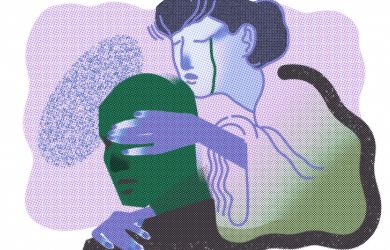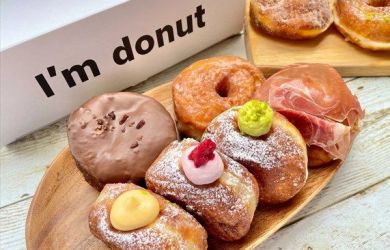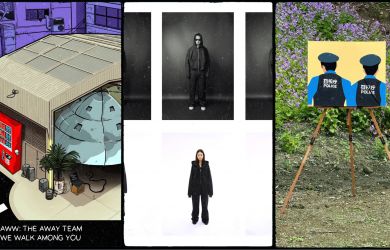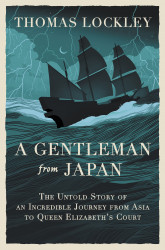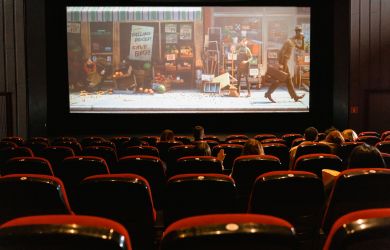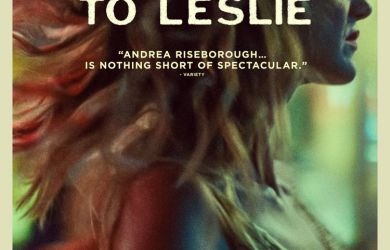
Originally published on metropolis.co.jp on June 2011

Photos by Jeff W. Richards


In case you were wondering why there exists a basement bar in the middle of Shibuya’s Center Gai that has both a month and a large marine animal in its name, it’s because Hachigatsu no Kujira is named after the 1987 film The Whales of August. This contemplative film, starring Lillian Gish and Bette Davis as two elderly sisters looking back on their lives, was insanely popular in Japan, more so than anywhere else.
For cinephiles it’s worth biting the bullet and braving the ¥500 table charge (payable, of course, even if you are not sitting at the table) and which brings with it some insultingly tiny snacks (we were given one dish bearing six pieces of microwaved penne with a nondescript meat-like sauce—for two of us). Once you stifle your rage at such injustice, you will be delighted to cast your eyes upon the old movie posters including The Sting, Blues Brothers, and the obligatory Audrey Hepburn portrait, among others, dotted among bottle-lined shelves.
But the main reason you’re here is the cinematic cocktail list. It reads like a katakana-ized version of a Blockbusters rental catalogue, with a list of movies, past and present, on offer in drink-form. Alongside each movie are symbols signifying the main alcoholic ingredient: “W” for Whisky, “V” for Vodka, etc., and whether it is a long drink, short drink or frozen.
The bar has been in its present form for 23 years but the drinks are not exclusively oldies. Apart from a section of “Movie Classics” topped by The Godfather (whisky, short), the “New” section was what we gravitated towards first, ordering a Black Swan (brandy, short) and The Fighter (beer, long), both ¥940. A lady further down the bar was well into a Mamma Mia, which looked like a parrot drowned in a pot of turpentine—only tastier.
The Black Swan was poured exquisitely into a martini glass on the bar in front of us. It was small, but perfectly crafted. With brandy, blue Curaçao, Dubonnet and Angostura bitters, the four flavors intertwined subtly, creating a picture of genius, insecurity, and poetic complexity. I felt my lips touch Natalie Portman’s as I downed the dregs. A palpable success!
The Fighter was, in many ways, much like Christian Bale’s character in the movie: cheap, thin, and Irish. The nama Kirin beer with Tullamore Dew Irish whiskey and a large chunk of ice went down damn smooth and filled my Canadian associate with cinematic memories of his Canadian college days.
Fries for ¥420 were considered and then discarded. No time for an intermission.
We fancied trying something homegrown, so opted for a Kurosawa favorite, Kagemusha. I half expected it to contain “Akira Curaçao” but the joke apparently doesn’t work in Japanese. Instead, it represented 16th century warring-states-era Japan with a moody, yet herbal, mix of Fernet Branca, vodka and grapefruit juice in a tumbler with a massive rock of ice. It was musky and filled me with brooding thoughts of war.
To finish on a contemporary note, we went for a Back to the Future, containing lime, ginger ale, blue Curaçao and Ronrico 151 rum. The rum is poured flaming into your glass, simulating the fiery tracks of the Delorean time machine. A show stealer, it had the whole bar ooh-ing and ahh-ing. The drink itself was light, simple and refreshing, just like Robert Zemeckis’ 1985 family classic.
As we were paying up our not-cheap-but-worth-it-for-the-gimmick bar tab, the aforementioned lady’s next drink arrived. It was a gigantic mélange of melons, pineapples and flowers, with a glass somewhere underneath. Costing ¥1,680 and containing vodka, pamplemousse, grapefruit juice and orange juice, this was the Austin Powers, of course. We walked out as she was trying to get her head around it, while wondering if take-out was an option if she was unable to finish.
